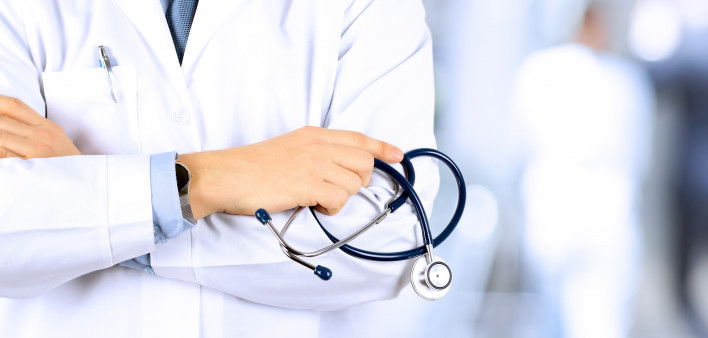The U.S. HIV population is steadily aging, with one third of those living with the virus having surpassed age 50 in 2010 and a predicted half reaching this age by 2020. According to just-released statistics in New York City, for example, 33 percent of local residents living with diagnosed HIV are in their 50s and 24 percent are 60 years old or older. Sixty-five percent of those living with diagnosed HIV in San Francisco are at least 50 years old.
To see the first major group of people with HIV achieving old age is something to celebrate. After all, it is thanks to the astonishing progress in the development of effective treatments for the virus that such individuals have been able to experience a long life. But just as aging affects those who don’t have the virus, the steady march into older age brings to HIV-positive individuals an increased risk of various illnesses and other significant detriments to well-being and physical functioning.
Additionally, compared with their HIV-negative peers, people with the virus have higher risks of numerous aging-related conditions and also may experience them at younger ages, including cardiovascular disease (CVD), cancer, diabetes, chronic kidney disease and cognitive decline.
Rates of these conditions are increasing among people with HIV. The proportion of HIV-positive individuals in the U.S. Medicaid Database who had CVD increased from 3 percent to 7 percent between 2003 and 2013, while the rate of kidney impairment rose from 5 percent to 11 percent, osteoporosis increased from 5 percent to 6 percent and diabetes increased from 9 percent to 19 percent.
Numerous factors may fuel such health problems among those with HIV, including the virus itself and the chronic inflammatory state to which even well-treated virus gives rise. The HIV population also has higher rates of risk factors associated with negative health outcomes, including smoking and drug use.
Today, physicians’ guidelines for addressing the intersection of HIV and older age remain critically underdeveloped, in part owing to the fact that until recently the pool of potential older HIV-positive research subjects, in particular those older than 65 years old, was relatively small. Seeking to address such an important unmet need, investigators from various universities in the United States, Spain, the United Kingdom, Italy and Ireland conducted a review of scientific literature with the goal of getting the ball rolling on developing such guidelines.
Publishing their report in BioMed Research International, the study authors noted a host of additional health, psychosocial and physical-functioning challenges that all older adults may face. These include geriatric syndromes such as falls, incontinence, frailty and dementia. Then there is the practice of polypharmacy, or taking a high number of medications, which can lead to drug-drug interactions and is associated with increased health risks. Aging adults may also face social difficulties, such as isolation and a lack of caregivers.
Addressing HIV-associated neurocognitive disorder (HAND), which encompasses numerous forms of cognitive impairment, including HIV-associated dementia (HAD), is particularly important, according to the study authors.
“There is a growing need to identify factors associated with successful cognitive aging” in the HIV population, the researchers write. “In addition, a systematic and appropriate neuropsychological evaluation of older adults with HIV should be incorporated into clinical practice to identify patients with cognitive impairment, predict their functional capacity and determine the best potential therapeutic approach for delaying or reducing the impact of cognitive impairment.”
The HIV population apparently experiences impaired physical function earlier than HIV-negative individuals. Frailty, which the study authors define as a condition in which an individual is “unable to effectively recover from various stressors,” occurs among 5 to 19 percent of people with HIV in various research cohorts.
In addition to the typical factors physicians should address at standard medical visits for patients with HIV, the study authors recommend the following approaches for addressing aging-related conditions in this population, to be conducted at least annually:
- Assessing various non-HIV illnesses, known as comorbidities, based on the individual’s age, such as cancer, CVD and bone loss.
- Evaluating various geriatric syndromes, including falls, incontinence, sleep disorders, confusion, vision and hearing problems and sarcopenia (aging-related loss of muscle tissue).
- Providing necessary vaccines, including booster shots.
- Testing for hepatitis B and C viruses (HBV/HCV), which are common among people with HIV, as well sexually transmitted infections.
- Conducting tests of physical function and frailty, including assessing patients’ four-meter walk, grip strength or time to rise from a chair.
- Assessing their nutrition.
- Evaluating their neuropsychological and psychological health, such as by asking about depressive symptoms, quality of life or conducting other related tests.
- Evaluating various social problems, such as isolation and loneliness.
Actions physicians should take based on the results of such assessments include:
- Preventing various chronic health conditions or detecting and controlling them early.
- Checking for drug-drug interactions and discontinuing unnecessary medications.
- Selecting the most appropriate antiretroviral regimen based on an individual’s health conditions. Some guidelines, for example, caution clinicians about prescribing Ziagen (abacavir)-based regimens because the medication has been associated with CVD in some studies.
- Reducing risk factors for negative health outcomes by encouraging healthy behaviors. This includes counseling about diet and physical activityan promoting smoking cessation.
- Intervening in the cases of sensory of physical problems.
- Encouraging muscle mass maintenance through better nutrition and physical activity.
- Treating the underlying causes of declines in physical capacity.
- Treating cognitive impairment.
- Referring patients to a psychiatrist or psychologist for psychological conditions such as depression and anxiety and to a social worker for other social problems.
- Encouraging various behaviors that enhance overall personal capacity, including improving personal skills and fostering personal relationships.
“In summary,” the study authors write, “aging is a complex process that is more complicated in combination with a chronic disease such as HIV infection. The geriatric literature suggests that care of the older patient with [multiple health conditions] is best managed with the assistance of a multidisciplinary team. Providers should seek to understand the future health needs of older HIV-infected patients and modify the goals of care to meet these needs.”
Benjamin Ryan is POZ’s editor at large, responsible for HIV science reporting. His work has also appeared in The New York Times, New York, The Nation, The Atlantic and The Marshall Project. Follow him on Facebook, Twitter and on his website, benryan.net.







5 Comments
5 Comments